"25 mg lesefer with amex, acne grades."
By: Joseph A. Smith, Jr., MD
- Professor of Urologic Surgery, Vanderbilt University, Nashville, Tennessee
The most common trigger is cardiac asystole or different forms of overwhelming cardiopulmonary failure skin care 7 belleville nj discount lesefer 100 mg. Clinically skin care zurich purchase 25 mg lesefer with visa, it results in unconsciousness: coma followed often by the eyes-open vegetative state acne on back safe lesefer 50 mg. Early absence of pupillary gentle reflexes acne zones and meaning 100 mg lesefer for sale, corneal reflexes, and reflex eye movements predict a poor outcome. Patients missing all of those responses even within the first day of hypoxic-ischemic coma have lower than a 5% likelihood of resuming independent activities within 1 year (see Chapter 444). The final article in this collection, which establishes the rules for endarterectomy in symptomatic carotid artery atherosclerosis. Report of the Quality Standards Subcommittee of the American Academy of Neurology making a apply commonplace. The acute rise in intracranial strain from arterial rupture causes lack of consciousness in about half of sufferers, and lots of of those die of cerebral herniation (see Chapter 444). Intracerebral hemorrhage is most incessantly caused by the rupture of arteries mendacity deep within the brain substance (hypertensive hemorrhage, vascular malformations, head trauma), but in some cases the pressure of blood from ruptured floor arteries can penetrate the brain parenchyma. Blood within the cerebral ventricles results both from reflux of subarachnoid blood by way of the fourth ventricular foramina or by extension from a web site of intraparenchymal hemorrhage. Women are barely extra doubtless than males (three:2) to undergo rupture of a cerebral aneurysm, particularly throughout pregnancy. The pathogenesis of saccular aneurysms reflects a mix of congenital, acquired, and hereditary components. These defects lead to microaneurysmal dilatations (smaller than 2 mm) of the circle of Willis arteries in 15 to 20% of the population. Larger (>5 mm) aneurysms are present in 5% of the population, characteristically distributed at the arterial bifurcations. Eighty per cent are situated in the anterior, carotid artery-derived, arterial circulation; the remainder lie alongside the bifurcations of vertebrobasilar arteries. A modest incidence of familial saccular aneurysms in addition to their affiliation with polycystic kidney disease, Ehlers-Danlos syndrome, and different connective tissue disorders, implicates hereditary components. Fusiform or ectatic aneurysms purchase their name from the spindle-formed dilatation and elongation that happen in massive arteries at the web site of arteriosclerotic narrowing. They type in distal cerebral arteries at the point where small septic cardiogenic emboli lodge. They are incessantly multiple and can be present in both the anterior or the posterior cerebral circulation. Focal headaches often signal compression of pain-delicate constructions from an increasing aneurysm, during which case the headache is normally progressive. Such sentinel headaches are incessantly severe and could also be accompanied by nausea or vomiting or may trigger meningeal irritation. Compression of the oculomotor nerve by an increasing aneurysm of the posterior speaking artery at its junction with both the internal carotid or the posterior cerebral artery and, much less incessantly, of the superior cerebellar artery can cause ipsilateral ophthalmoparesis, ptosis, and pupillary dilatation with lack of the pupillary gentle reflex. Rupture of saccular aneurysms into the subarachnoid house seldom is related to focal signs or symptoms. Approximately 10% of sufferers stay in coma for several days, depending on the situation of the aneurysm and the amount of bleeding. Blood strain is incessantly elevated, and body temperature normally rises, significantly through the early days after bleeding as subarachnoid blood merchandise produce a chemical meningitis. The presence of back pain or spinal twine symptoms at onset should immediate a search for a spinal source of hemorrhage. Repeat cerebral angiography is indicated three to 4 weeks later when the initial angiogram is negative and no different clues to the bleeding web site can be discovered. Cerebral vasospasm as recognized by cerebral angiography is outlined as an abnormal narrowing of cerebral arteries. Arteries forming the circle of Willis and their major branches are the initial web site of involvement, with extra distal arteries turning into concerned later. Vasospastic vessels present medial necrosis within the first few weeks, and later medial atrophy, subendothelial fibrosis, and intimal thickening.
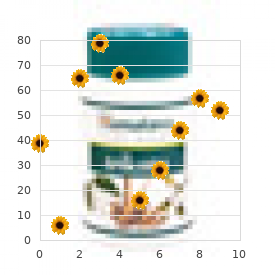
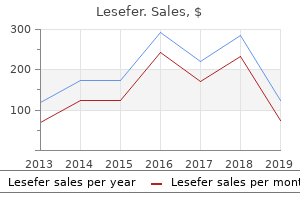
Technical and radiotherapeutic issues of intraoral cone electron beam radiation remedy for head and neck cancer acne lotion purchase lesefer 50 mg. Epidermoid carcinomas of the floor of mouth treated by unique irradiation: statistical examine of a sequence of 207 cases skin care jakarta timur order lesefer 25 mg line. Frequency and therapeutic implications of "skip metastases" in the neck from squamous carcinoma of the oral tongue skin care 6 months before wedding discount 50 mg lesefer amex. Analysis of time-dose elements in squamous cell carcinoma of the oral tongue and floor of mouth treated with radiation remedy alone acne back lesefer 25 mg low cost. T2 oral tongue carcinoma treated with radiotherapy: evaluation of local management and problems. Carcinoma of the oral tongue: a comparability of results and problems of therapy with radiotherapy and/or surgical procedure. The examine of tumoral, radiobiological, and general health elements that affect results and problems in a sequence of 448 oral tongue carcinomas treated exclusively by irradiation. Do pre-irradiation dental extractions cut back the chance of osteoradionecrosis of the mandible? Evaluation of the role of radiotherapy in the administration of carcinoma of the buccal mucosa. Radiotherapy alone or combined with surgical procedure for adenoid cystic carcinoma of the pinnacle and neck. Retromolar trigone squamous cell carcinoma treated with radiotherapy alone or combined with surgical procedure. General ideas for therapy of cancers in the head and neck: choice of therapy for the primary website and for the neck. Evolution of the clinically unfavorable neck in patients with squamous cell carcinoma of the faucial arch. Transoral laser microsurgery for squamous cell carcinoma of the base of the tongue. Does feeding tube placement predict for long-term swallowing disability after radiotherapy for head and neck cancer? The relationship of using tobacco and alcohol to cancer of the oral cavity, pharynx or larynx. T1N0 to T2N0 squamous cell carcinoma of the glottic larynx treated with definitive radiotherapy. Stage T3 squamous cell carcinoma of the glottic larynx: a comparability of laryngectomy and irradiation. Laryngeal preservation with supracricoid partial laryngectomy ends in improved high quality of life in comparison with total laryngectomy. Voice rehabilitation after total laryngectomy and postoperative radiation remedy. Radiotherapy for early glottic carcinoma (T1N0M0): results of prospective randomized examine of radiation fraction size and total therapy time. Parameters that predict local management after definitive radiotherapy for squamous cell carcinoma of the pinnacle and neck. Preradiotherapy computed tomography as a predictor of local management in supraglottic carcinoma. Can pretreatment computed tomography predict local management in T3 squamous cell carcinoma of the glottic larynx treated with definitive radiotherapy? The evaluation of therapy of patients with in depth squamous cancer of the vocal cords. The steepness of the dose response curve both for tumor cure and normal tissue harm. Carcinoma of the supraglottic larynx: therapy results with radiotherapy alone or with deliberate neck dissection. Laryngofissure and cordectomy for early cordal carcinoma: outcome in 182 patients. Evaluation of pretreatment computed tomography as a predictor of local management in T1/T2 pyriform sinus carcinoma treated with definitive radiotherapy.
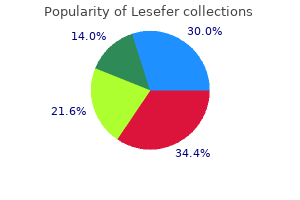
Clinical pharmacogenetics implementation consortium guidelines for thiopurine methyltransferase genotype and thiopurine dosing: 2013 replace skin care gift packs 100 mg lesefer. Clinical Pharmacogenetics Implementation Consortium guidelines for dihydropyrimidine dehydrogenase genotype and fluoropyrimidine dosing acne vulgaris discount 50 mg lesefer with amex. Dihydropyrimidine dehydrogenase pharmacogenetics in sufferers with colorectal cancer acne 8 yr old girl buy 50mg lesefer mastercard. After more than 50 years of use skin care 6 months before wedding lesefer 25mg lowest price, the essential chemistry and pharmacology of this drug household is properly understood and has not changed considerably. The household accommodates six main courses: nitrogen mustards, aziridines, alkyl sulfonates, epoxides, nitrosoureas, and triazene compounds, although a few nonstandard brokers have lately been developed. Most epoxides tend to be fairly nonspecific with respect to their reactivity and, as such, few have useful medical traits. This chapter provides perspective on how the limited sorts of alkylating brokers proceed to be useful in the therapeutic administration of cancer sufferers. The alkylating brokers are a various group of anticancer brokers with the commonality that they react in a manner such that an electrophilic alkyl group or a substituted alkyl group can covalently bind to cellular nucleophilic websites. Electrophilicity is achieved by way of the formation of carbonium ion intermediates and can lead to transition complexes with target molecules. Although the alkylating brokers react with cells in all phases of the cell cycle, their efficacy and toxicity result from interference with quickly proliferating tissues. From a historical perspective, the vesicant properties of mustard gas used during World War I have been shown to be accompanied by the suppression of lymphoid and hematologic functions in experimental animals1 and led to the development of mechlorethamine as the first alkylating agent used in the administration of human cancer. Most of the alkylating brokers cause dose-limiting toxicities to the bone marrow and, to a lesser diploma, the intestinal mucosa, with other organ systems also affected contingent on the individual drug, dosage, and duration of remedy. Despite the present pattern towards focused therapies, this class of "nonspecific" medication maintains an important role in cancer chemotherapy. Because of the classic nature of the drug household, there have been comparatively few advances in either their use or utility since publication of the earlier version of this book. Reactivity of electrophiles3 means that the rates of alkylation of cellular nucleophiles (including thiols, phosphates, amino and imidazole teams of amino acids, and varied reactive websites in nucleic acid bases) are most depending on their potential energy states, which may be outlined as "hard" or "delicate," based on the polarizability of their reactive centers. Alkyl carbonium ions will react most readily with hard nucleophiles (possessing a highly polarized adverse cost density), the place the excessive-energy transition state (a potential energy barrier to the reaction) is most favorable. In contrast to the nitrogen mustards and nitrosoureas, busulfan has a higher effect on myeloid cells than lymphoid cells, thus the rationale for its use in opposition to persistent myelogenous leukemia. The price-limiting step is the preliminary formation of the reactive intermediate, and the rate is actually impartial of the focus of the substrate. Although intermediate metabolites are distinct, the lively alkylating species is a carbonium ion in each case. As an preliminary step in alkylation, chlorine acts as a leaving group and the -carbon reacts with the nucleophilic nitrogen atom to kind the cyclic, positively charged, reactive aziridinium moiety. Reaction of the aziridinium ring with an electron-rich nucleophile creates an preliminary alkylation product. The remaining chloroethyl group achieves bifunctionality by way of the formation of a second aziridinium. Melphalan (l-phenylalanine mustard), chlorambucil, cyclophosphamide, and ifosfamide (see Table 17. These derivatives have electron-withdrawing teams substituted on the nitrogen atom, decreasing the nucleophilicity of the nitrogen and rendering them much less reactive, however enhancing their antitumor efficacy. Cyclophosphamide and ifosfamide are prodrugs that require cytochrome P-450 metabolism to launch lively alkylating species. Cyclophosphamide continues to be probably the most broadly used alkylating agent and has activity in opposition to a variety of tumors. Through a subsequent dehalogenation step, a second electrophilic site imparts bifunctionality. The isocyanate species generated are also electrophilic, showing nucleophilic selectivity towards sulfhydryl and amino teams that can inhibit a variety of enzymes concerned in nucleic acid synthesis and thiol stability. However, its lack of bone marrow toxicity and robust diabetogenic effect in animals led to its use in cancer of the pancreas (see Table 17.
Order lesefer 50 mg with visa. NIGHTTIME SKINCARE ROUTINE (with subs) | hyulari.
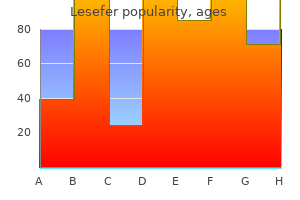
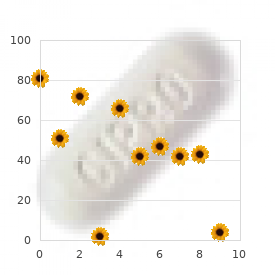
References:
- https://pi.lilly.com/us/emgality-uspi.pdf
- https://grupologsa.com/qz-res/uploads/Venablock-Clinical-Study.pdf
- https://visionearth.org/downloads/THE-HEALING-FACTOR-v20150318-001.pdf

